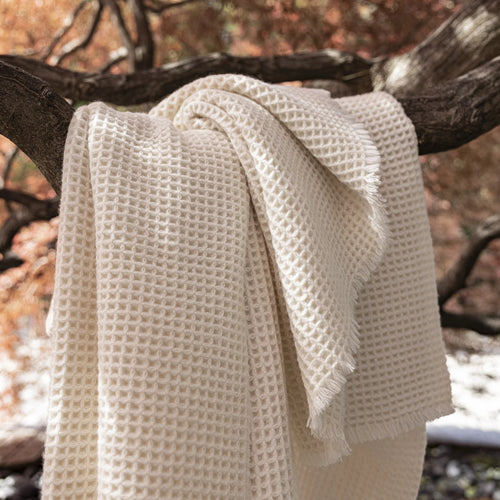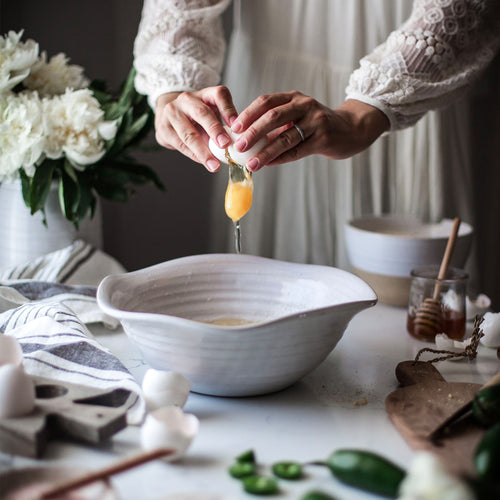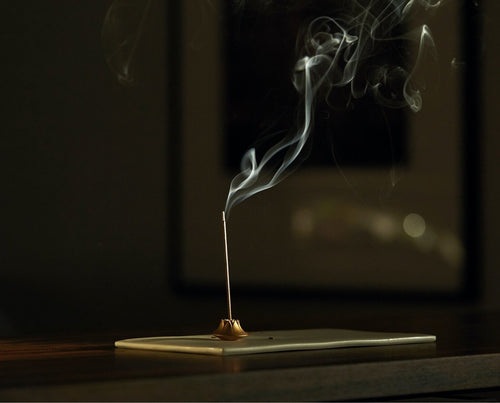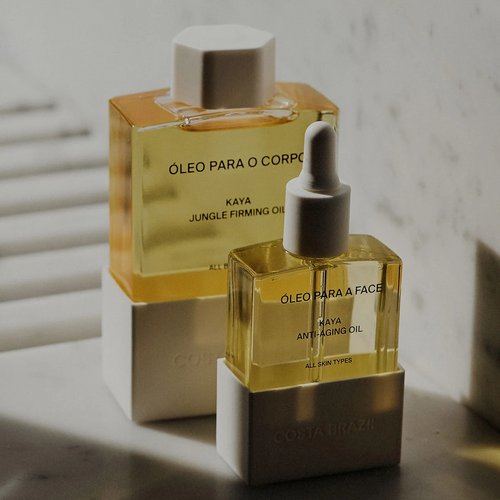Are Your Wellness Products Clean?: Spring Cleaning Part II
Spring Cleaning: A Refresh For The Soul In Three Parts
Spring is a fabulous time of year when the world awakens from its long winter slumber. The flowers bloom, birds sing, and the days grow longer. There's a general sense of anticipation in the air for a fresh start.
With this new season, we often hear about "spring cleaning". For us, we like to apply it to both space and self. We embrace the opportunity as a conscious clearing or a mindful edit, a letting go of that which no longer serves us and a seeking of new products and new ways to shift towards a cleaner way of living, cooking, being. A Spring Refresh.
After the kitchen, we shift our focus to the bathroom and the wellness products that we use.
II. Switching To Clean Self Care
Just as our dietary habits shift with the seasons, so do our self care routine. A shift towards different products such as sunscreen and lighter moisturizers, are some of the typical changes that we see as the weather warms.
As we look to replenish or replace some of our summer skincare and body care products, or source new self care essentials, it's important to have an awareness of the ingredients behind these products and what they really contain.
As with the food industry, individual countries set the standard towards the acceptable ingredients allowed in topical products. And these products are not regulated to the same standard in every country. Especially in products marked organic, there may be a substantial difference in how clean the ingredients actually are.
The requirements in the USA, for example, are far more liberal than in the EU where 1,300 chemicals have been banned from use in skincare, makeup, and body care, of which only 11 have been banned in the US!
1. HOW ARE YOUR SPRING CLEANING PRODUCTS MADE + WHERE DO THEY COME FROM?
So having an awareness of where your skincare is made is a great first step to knowing how clean it is.
At Grayson De Vere, both personally and professionally, we seek out smaller brands from countries that do a lot of the leg work for us in maintaining high standards for ingredients and sourcing. We often gravitate towards companies that offer organic products produced in The Commonwealth Countries. The Commonwealth—those countries that are legally aligned with Great Britain and accept The British Monarchy as their own, including Canada, New Zealand, and Australia—maintains a stringent guideline for approving products labeled as Organic as well as regulating ingredients in general.
This is why we get to know all our vendors and artisans, especially smaller brands, and stand behind them and their clean ingredients! Two of our favorite foreign brands are Saya and The Organic Pharmacy.
Saya from Noosa, Australia
An organic brand from Noosa, Australia, Saya sources their ingredients sustainably and locally. In recent years, they've shifted their packaging to be made out of sugarcane plastic so as to be even more sustainable and decrease their footprint on the planet. Some of our favorite products that they produce are the Hand Wash and Hand + Body Lotion duo, as well as the Body Wash and Renew Serum (a plant-based, non-chemical version of retinol).
The Organic Pharmacy from the UK
Largely considered the "original" organic brand, TOP is food-grade organic—the soil where the ingredients grow must be organic for 7 years and the trail from seed to shelf must be proven to be certified as such—based in the UK. On the packaging exterior, they share the exact percentage of the formula that is organic—overt transparency is another great indicator to look for—while the residual product is made up of anything from clean ingredients to water, all of which cannot legally be certified organic. They've also recently shifted to a more sustainable, refillable packaging model for many of their products.
CLEAN SKINCARE IN THE US
There are, of course, several sustainable US-based brands who honorably elect to hold themselves to the European standard. Many of these are made with plant-based ingredients, using organic essential oils, and employing ancient techniques that have been passed down—such as Ayurvedic approaches—to create their products. One of our favorite brands is California-based Surya.
Surya from Santa Monica, CA
Created by world-renowned Ayurveda Panchakarma expert, Martha Soffer, Surya is an Ayurvedic spa based in California. Their new line of plant-based skincare and bodycare is made using essential oils + ingredients sourced from a network of fair-trade, wild-harvested, and eco-based farmers and miners. Their glass packaging is designed to be UV-protective to maintain the quality of their products. We love the body oils, the collagen cream, and the balancing face oil.
2. NON-TOXIC SHAMPOOS, WASHES + CLEANSERS
One type of product that tends to be widely laced with chemicals is those that foam or lather—this includes shampoos, body washes, cleansers, and even toothpaste. This sudsy, lathering effect is due to the presence of sodium lauryl sulfate, or SLS, which was originally formulated to clean engine oil grease off of fighter jets during WWII. Its effectiveness led to its widespread inclusion in products used to clean our delicate bodies.
The skin, the largest organ in the human body, readily absorbs products applied to it. And areas like the face and scalp have thinner skin with more blood vessels closer to the surface, increasing absorption ability. That is why we prefer to stay away from such harsh chemicals, seeking alternative options when it comes to these everyday products to detoxify our home and our wellness routines.
3. CHANGING LOTIONS + CREAMS
There are many ingredients beyond sulfates like SLS such as silicones (plastics), parabens (preservatives), pthalates (stabilizers), palm oils, etc, that are detrimental to both the environment and to our health yet are often found in our skincare products. In addition to in washes and cleansers, these are frequently added to serums, lotions, and creams. That is why it is important to check the ingredients of your products or go with a trustworthy brand that avoids unnatural ingredients altogether.
4. HOW DOES YOUR CANDLE BURN?
Unbeknownst to most, candles can be some of the most toxic things one can have in their home. For women especially, these can be endocrine disruptors that impact everything from fertility to weight to susceptibility to diseases. This is due to the toxic fumes—namely benzene, acetone, and tolune—released into the air from burning paraffin wax, the main ingredient in most low-quality candles.
This is why we look to offer candles that are made using vegetable wax—most often soy—which is a much cleaner and better alternative, both for yourself and the environment. Beeswax is another great option but is less sustainable due to how it is sourced.
Synthetic fragrances are also often added to candles and diffusers to recreate smells that are harder to come by, or not quite as potent in oil form. However, not all synthetic fragrances are made equal. This is a specific area of the wellness industry that is particularly unregulated. As a result, information on the toxicity levels in varying synthetic or manmade fragrances is frequently hard to obtain.
There are non-toxic synthetic fragrances that exist, made using plant-based ingredients making them less likely to have a negative effect on your health. However, the type of fragrance that is in your candle is not always clear.
Seeking small brands that are European-based is a great way to ensure your home fragrances are made using clean and sustainable ingredients. We've listed some of our favorites below:
Another great option for candle lovers who may be sensitive to toxins in home fragrances is a wax warmer, a tool for diffusing scent that has recently seen significant growth in popularity. This involves releasing the fragrance by melting wax in a ceramic dish through heating via a lamp or tea light candle placed beneath. This method of melting, as opposed to burning, prevents the release of toxic fumes that can come from burning fragranced wax.
We love the Promeneuse by Trudon, a striking and functional wax warmer that uses a tealight to melt a scented wax cameo—a wax melt featuring a carved portrait, in true Trudon style—placed in the ceramic dish above. The fluted green glass also diffuses a beautiful, soft light from the lit tealight while the scent is diffused throughout your space. Beyond being cleaner and more sustainable, we love this option as it allows us to more regularly change the fragrances that we use—through changing out the wax cameos which are smaller and less expensive.
Overall, if you're looking to detoxify your home, doing some research and changing out your fragrances for brands that are clean and sustainable is a simple switch that can make a world of difference for your health as well as the environment at large.
Cover Photo Credit: Nikolas Koenig










